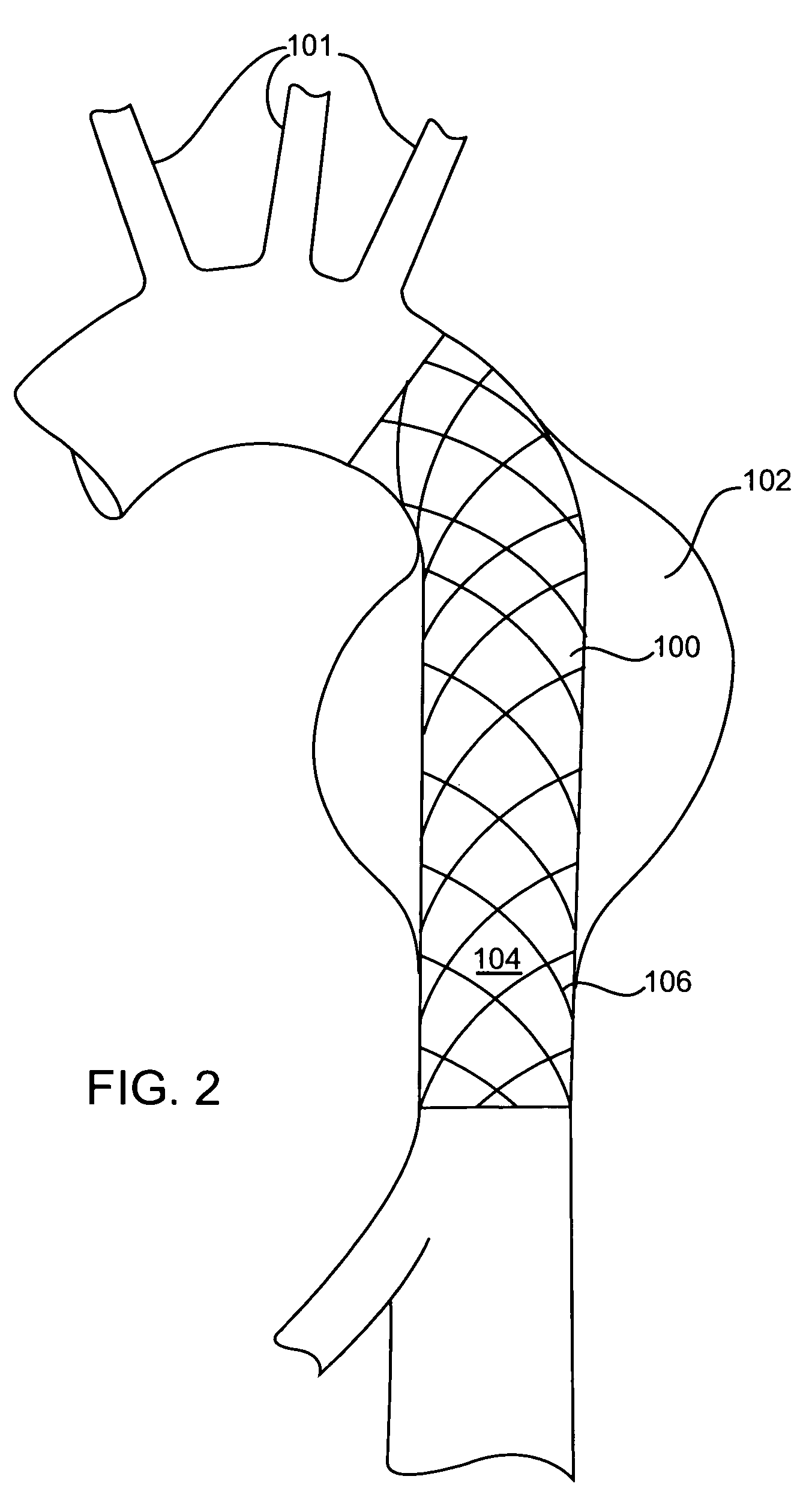Intravascular securement device
a securement device and intravascular technology, applied in the field of body lumens, can solve the problems of high patient invasiveness, improper sealing of stent grafts against the blood vessel wall, and inability of patients to undergo such procedures, so as to achieve minimal risk of endoleakage and minimal risk of migration
- Summary
- Abstract
- Description
- Claims
- Application Information
AI Technical Summary
Benefits of technology
Problems solved by technology
Method used
Image
Examples
Embodiment Construction
[0026] Referring initially to FIG. 1, there is shown an intravascular repair vehicle, specifically a stent graft 10, positioned in a blood vessel, in this embodiment, the descending abdominal aorta 12, and spanning, within the aorta 12, an aneurysmal portion 14 of the aorta 12. The aneurysmal portion 14 is formed of a bulging of the aorta wall 16, in a location where the strength and resiliency of the aorta wall 16 is weakened. As a result, an aneurysmal sac 18 is formed of distended vessel wall tissue. The stent graft 10 is positioned spanning the sac 18 and thereby both provides a secure passageway for blood flow through the aorta 12 and seals off the aneurysmal portion 14 of the aorta 12 from contact with further blood flow through the aorta 12. The stent graft 10 further includes a graft portion 20, which is configured from a biocompatible fabric, and which is sewn or otherwise attached to stent portion 22, which is shown as a plurality of wires 24 interleaved into a mesh 26 pat...
PUM
 Login to View More
Login to View More Abstract
Description
Claims
Application Information
 Login to View More
Login to View More - R&D
- Intellectual Property
- Life Sciences
- Materials
- Tech Scout
- Unparalleled Data Quality
- Higher Quality Content
- 60% Fewer Hallucinations
Browse by: Latest US Patents, China's latest patents, Technical Efficacy Thesaurus, Application Domain, Technology Topic, Popular Technical Reports.
© 2025 PatSnap. All rights reserved.Legal|Privacy policy|Modern Slavery Act Transparency Statement|Sitemap|About US| Contact US: help@patsnap.com



